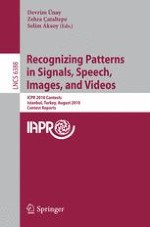This book constitutes the refereed contest reports of the 20th International Conference on Pattern Recognition, ICPR 2010, held in Istanbul, Turkey, in August 2010. The 31 revised full papers presented were carefully reviewed and selected. The papers are organized in topical sections on BiHTR - Bi-modal handwritten Text Recognition, CAMCOM 2010 - Verification of Video Source Camera Competition, CDC - Classifier Domains of Competence, GEPR - Graph Embedding for Pattern Recognition, ImageCLEF@ICPR - Information Fusion Task, ImageCLEF@ICPR - Visual Concept Detection Task, ImageCLEF@ICPR - Robot Vision Task, MOBIO - Mobile Biometry Face and Speaker Verification Evaluation, PR in HIMA - Pattern Recognition in Histopathological Images, SDHA 2010 - Semantic Description of Human Activities.
